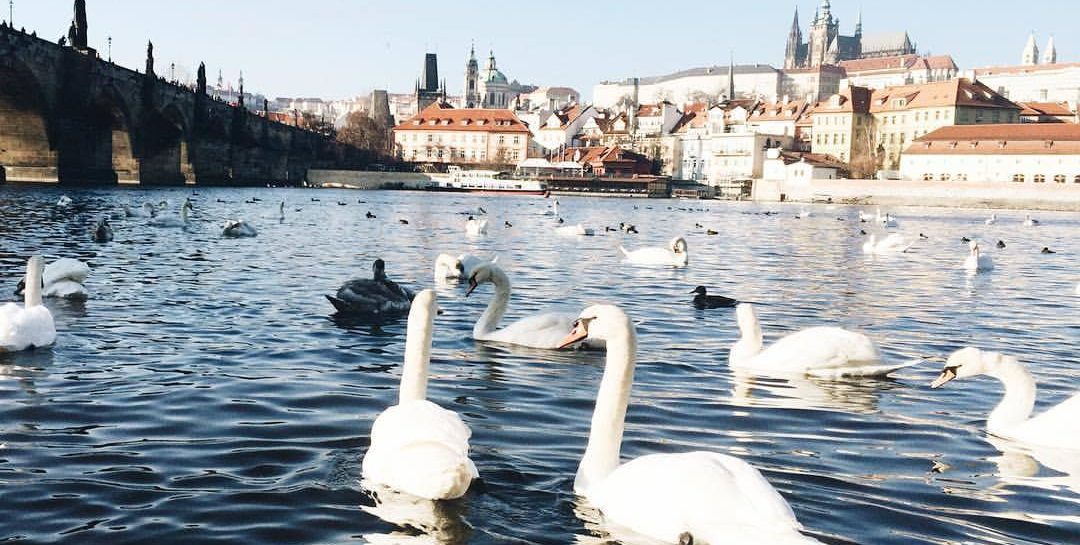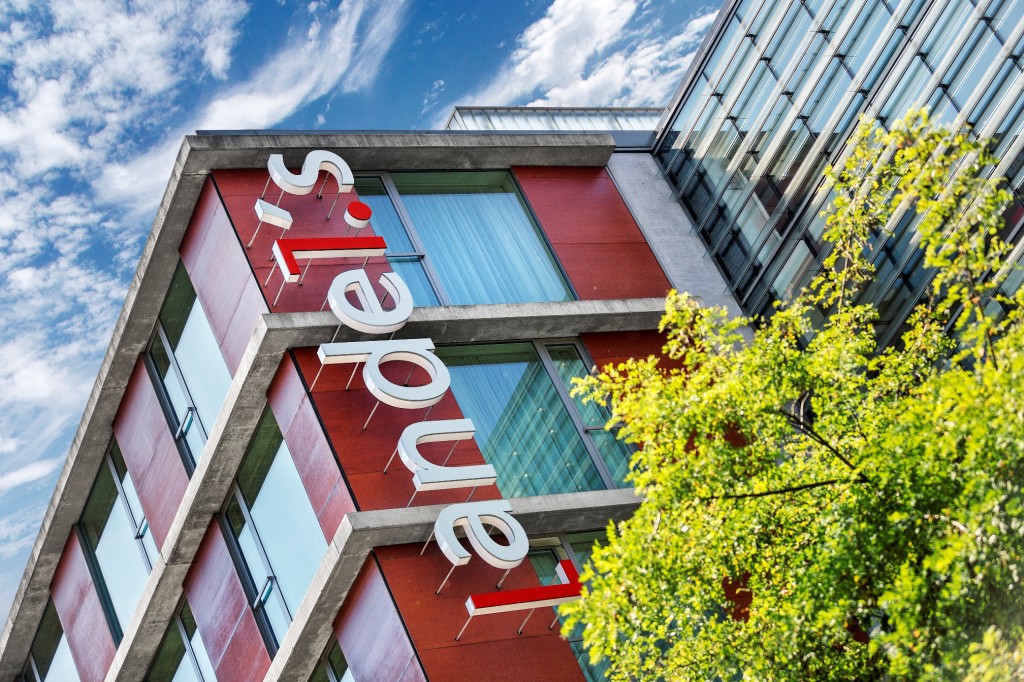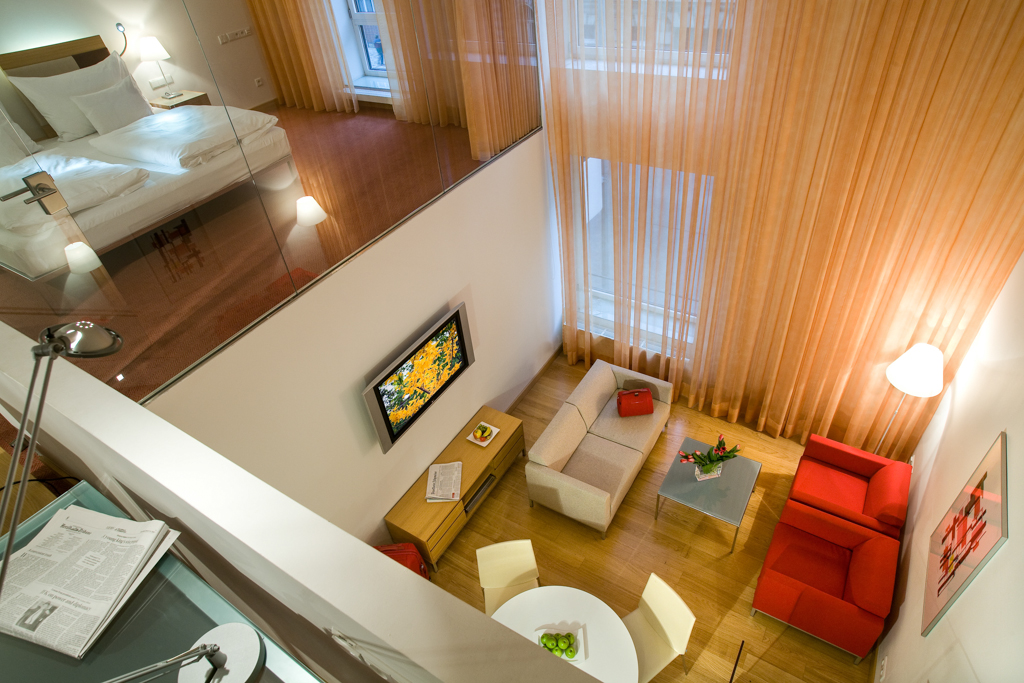
Citytrip Prague.
Contributed by Jens Hoffmann
The “Golden City of Prague” is the capital and largest city of the Czech Republic, the historical capital of Bohemia. For me one of the leading cultural cities in Europe.
The beautiful boutique style place with great suites in one of the most interesting hotels in one of the most fancy cities in Europe.
It offers not only a stunning skyline, the city is definetly one of Europe’s fanciest destinations.
The fairytale city, set on nine hills, is divided by the picturesque Vltava River, and linked by ornate bridges. It’s home to a treasure trove of architectural gems: Gothic spires and cathedrals, Renaissance and Baroque castles and palaces and stone towers. Everywhere we met David Cerny – an internationally famous Czech sculptor, best known for his giant space-age babies that crawl up the Prague TV tower a hundred meters above Prague.
Born in in Prague, Cerny became famous gained in 1991 by painting a Soviet tank pink, it still serves as a war memorial in central Prague. As the Monument to Soviet tank crews was still a national cultural monument at that time, his act was not welcome and he was arrested.
Provocation is that what his art stands for.
Cobblestone alleys and nearly hidden pathways lead to historic buildings, churches, and monuments. A renewed sense of style brings new life to this Czech Republic city, the historic center, with its grandiose architecture, and you feel everywhere the city’s ancient soul. Today, a new Prague also rises, led by contemporary architects, artists and designers. Furthermore lots of Chef de cuisines making Prague a foodie wonderland and culinary hub of Europe. The historic and modern converge in this dynamic destination, creating an evolving, poetic blend of architecture, culture, and cuisine. We started our day at the Hotel Diplomat, with a nice “Schnitzel” for lunch. Later on we went to the Old Town Square, surrounded by ornate Romanesque, Baroque, and Gothic architecture, and lined with cafés, bars, and shops. The perpetually bustling square is home to grand buildings such as the Kinsky Palace and the Church of St. Nicholas, the heartbeat of old Prague. Church of St. Nicholas, completed in 1735 has changed hands several times over the years, but now serves as a Czech Hussite church as well as a premier venue for classical concerts. The architectural point of the square, however, is the imposing Old Town Hall, with its origins dating back to 1334. Carvings of the coat of arms from the Holy Roman Empire and Czech kingdom adorn the 65-meter tower, which also features the intricately constructed 15th-century Astronomical Clock. Every hour, crowds vie for space at the base of the clock’s tower to observe the procession of the Twelve Apostles. We strolled the maze of streets and tiny paths leading away from the square, flanked with cafés, coffeehouses, antique stores, bookshops, and some popup stores of Prague’s top designers. Its only a short distance to the city’s modern center of business and culture. Wenceslas Square, site of the infamous 1989 Velvet Revolution that freed Czechoslovakia from communism, is filled with urban hipsters. The broad, stately boulevard, lined with cutting edge boutiques and fashion houses, leads to the National Museum and the opulent Prague State Opera, where visitors can take guided tours of the plush, neo-rococo auditorium, and attend evening opera and ballet performances. In the late afternoon, travelers should set aside time to relax while sampling Prague’s beverage of choice. Beer!! Czech Republic is birthplace of the original Pilsner and people say it is the one of top beer drinking countries in the world. The Czechs regard their locally produced beers as a national treasure. ‘If Czech beer is the best in the world,’ ask many visitors to Prague, ‘what’s the best beer in the Czech Republic? The most popular beer here is Gambrinus. However, it’s not universally recognized as the best. Kozel’s Medium, a pale lager, won the prize for the best Czech beer at the Research Institute of Brewing & Malting awards in 2008. Many locals, meanwhile, claim that Pilsner Urquell is the best of the bunch, with Czechs from Pilsen insisting that the water quality in their home city means that their pilsner is superior to those produced anywhere else in the country. We tried several ones together with goulash along with a few more pint of traditionally drawn Pilsner Urquell. We enjoyed the lively U Pinkasu Restaurant at Wenceslas Square. The long-standing, come-as-you-are beer hall has been serving Prague’s favorite potent brew for nearly three centuries. For modern twists on traditional Czech recipes, dine at the Michelin-starred La Degustation Boheme Bourgeoise. The sleek, intimate restaurant, with its dark woods, contemporary design, and ultra-attentive staff, features multi-course tasting menus, which are based on authentic 19th-century Czech recipes, inspired by regional, seasonal ingredients. After dinner, take in a Czech Philharmonic Orchestra performance in the elaborate concert hall, situated along the banks of the Vltava. The Rudolfinum’s renowned Dvorak Hall, which hosted the Czech Philharmonic Orchestra’s first performance in 1896 has been restored to its original grandeur. Before the tourist crowds arrive, take an early walk across the famous Charles Bridge, which connects Old Town to Mala Strana / Lesser Town. It’s the most famous of Prague’s myriad of bridges and a magnet for tourists and locals alike, bustling with street performers, souvenir carts, and food vendors. In the early morning hours, however, the Charles Bridge is a tranquil, breathtaking spot to watch the sun rise, casting golden hues on the red-tiled roofs and spires of Old Town, the glistening Vltava River, and beautiful Prague Castle. We walked the short distance to visit the sprawling Prague Castle, one of the largest castle complexes in the world. Originally built for princes and kings of Bohemia, it is now the seat of the president of the Czech Republic. The collection of buildings, set around three courtyards, represents 11 centuries of architectural styles. Of those buildings, St. Vitus Cathedral is the largest and the most important: It was founded in 1344 as a coronation church, and contains the Royal Mausoleum of Czech Kings as well as the crown jewels. Midday, the castle comes to life with the ceremonial changing of the guard at noon in the first courtyard and a classical concert. Before leaving the castle complex, be sure to take a stroll through historic Golden Lane, which is lined with small, colorful cottages that once housed servants, goldsmiths, and marksmen. The influential Czech author, Franz Kafka, lived in cottage No. 22 in 1916. We did the the Kafka’s tour in a nice multimedia Franz Kafka Museum, located just below Prague Castle in Lesser Town. The museum displays many of Kafka’s original photos, diaries, and letters, and the bookstore has an in-depth collection of his works.
Lesser Town, on the left side of Vltava River, has charming cobbled roads and narrow streets, flanked by impressive Renaissance homes, palaces, and leafy parks. Have lunch at Café Savoy, located on the riverbank. The beautifully restored coffeehouse, with an Old World wood and marble interior and ornate Neo-Renaissance ceiling, serves sophisticated international dishes, along with Czech specialties like cream soup with fresh river crayfish or grilled dry-aged rump roast. Also in Lesser Town is the church of Our Lady of Victory, home to the world-renowned Infant Jesus of Prague. Thousands of people travel here on pilgrimage each year to view the sculpture. Created in the first half of the 16th century or earlier, the statue has several miracles attributed to its famed healing powers. Enjoy an elegant dinner at Aquarius restaurant in Lesser Town, serving homemade pastas, fresh fish, and seafood dishes. French, Italian, and Mediterranean influences abound, but an authentic Czech experience can also be had with traditional plates including the Prague ham served with horseradish, pickles, and pearl onions, and the beef goulash with Pilsner Urquell beer.
Dinner here, with views of the inner fountain courtyard and live piano music, serves as a perfect prelude to a performance at Prague’s National Theater. Three artistic ensembles share the space on alternating nights; on any given evening, the senses will delight in the sights and sounds of opera, ballet, or theater on the grand stage accented by lavish decorations, classical frescoes, and sculptures. Must see is a visit to Holesovice, a trendy neighborhood in north Prague. The area is home to two major art centers, including the DOX Centre for Contemporary Art, Architecture and Design, a private initiative that features progressive artwork ranging from painting, sculpture, and design to film and new media. Housed in a former industrial plant building, the museum has a fantastic amount of contemporary works. The National Gallery also has a location in Holesovice, the Veletrzni Palace, which showcases a permanent exhibition of 20th- and 21st-century art. Cruising the easy-flowing Vltava River provides an unparalleled vantage point of Prague’s most endearing sights, far removed from the bustling street crowds. The relaxing, one-hour cruise begins at Kampa Island by Charles Bridge and meanders through the historical part of Prague. The Vltava steamboat is a piece of history itself, originally built in the late 1930s as part of a transportation fleet travelling between Prague, Stechovice, and Slapy. End the afternoon with a visit to the Prague Beer Museum in city center near Old Town Square. Don’t let the name fool you: This is more a pub than a museum, where beer aficionados can sample adventurous blends from smaller Czech breweries. Dinner at the enchanting Palffy Palác restaurant offers a celebratory finale to a whirlwind stay in Prague. This hidden gem is housed on the second floor of a Baroque palace building, tucked down a side street just below the terraced gardens of Prague Castle. The intimate dining room is set with crystal accents, white linen, and flickering candlelight, all of which are complemented by the classically and flawlessly prepared authentic French cuisine.
For one final glimpse of Prague before departing, head once more to the Charles Bridge for a short stroll.
We will come back for sure.
Photos: Sabine Hackl & Jens Hoffmann




